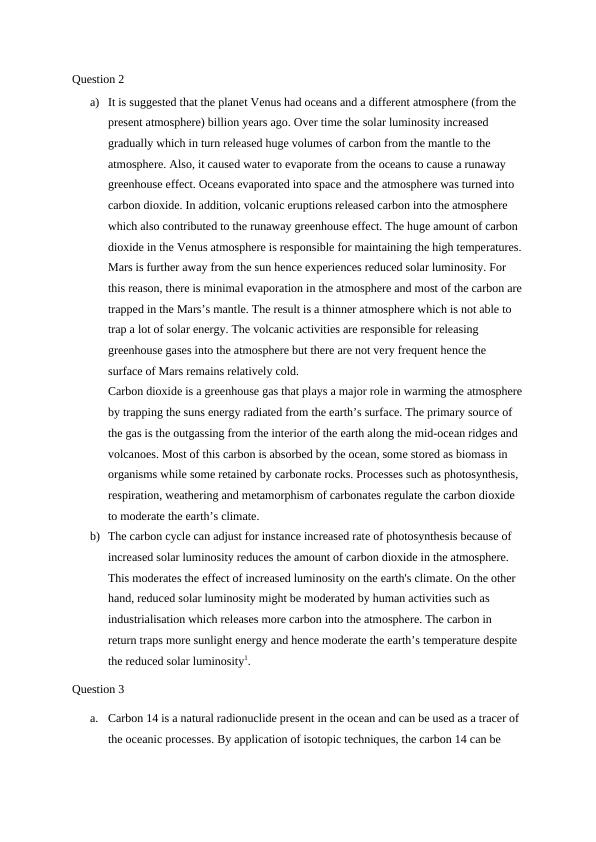Impact of Carbon on Climate and Ocean Processes
5 Pages1057 Words85 Views
Added on 2023-06-13
About This Document
This study material from Desklib discusses the impact of carbon on climate and ocean processes. It covers topics such as the carbon cycle, carbon 14, and the hydrological impact of forest clearance. The material also explains the processes responsible for the level of carbon 14 in the atmosphere and its distribution within the ocean waters.
Impact of Carbon on Climate and Ocean Processes
Added on 2023-06-13
ShareRelated Documents
End of preview
Want to access all the pages? Upload your documents or become a member.
Astronomy of Solar System - Geography
|6
|1259
|40
(PDF) Exploring the Red Planet Mars
|2
|739
|37
Impact of Climate Change and Global Warming on the Environment Research Paper 2022
|11
|2489
|17
Impact of Greenhouse Gases, Petroleum, Ocean Energy and Cryosphere on Climate Change
|7
|1585
|447
Geography Solution Assignment
|5
|448
|182
Environmental Impacts of Deforestation
|4
|746
|274


